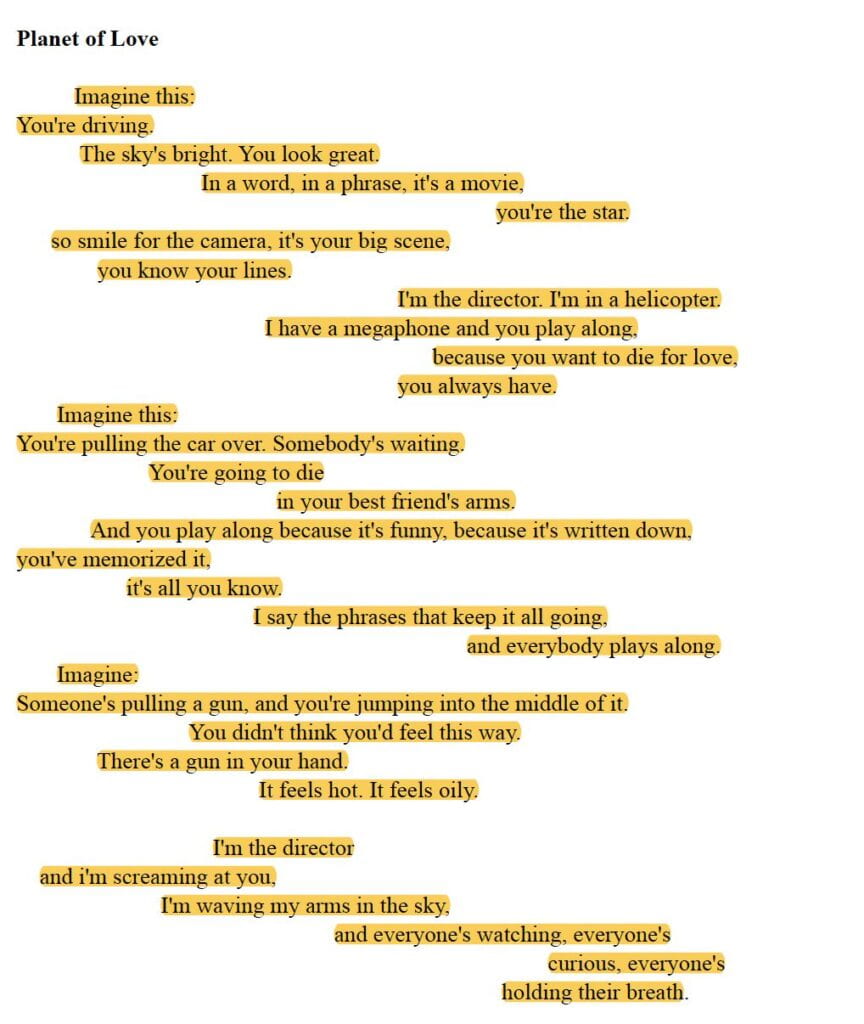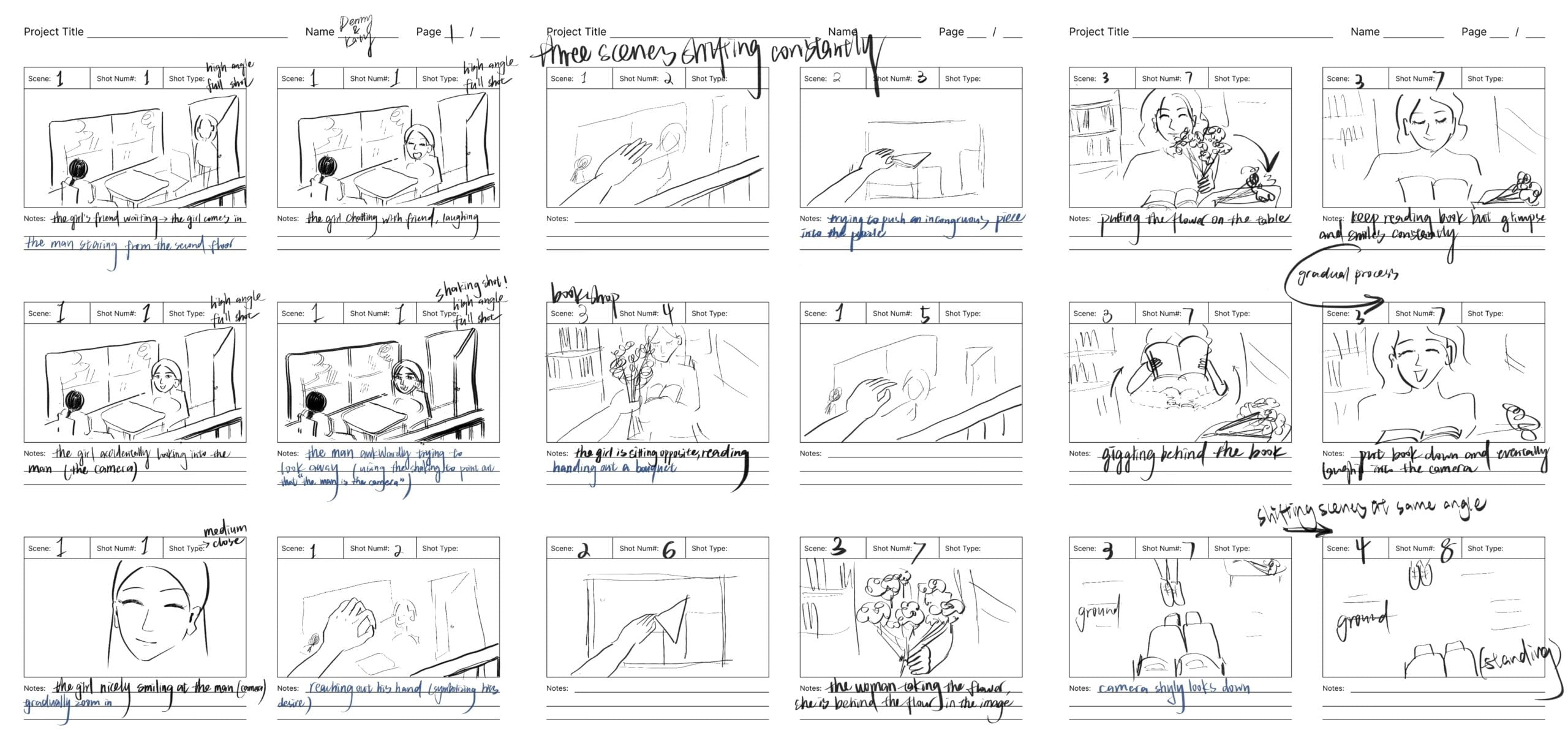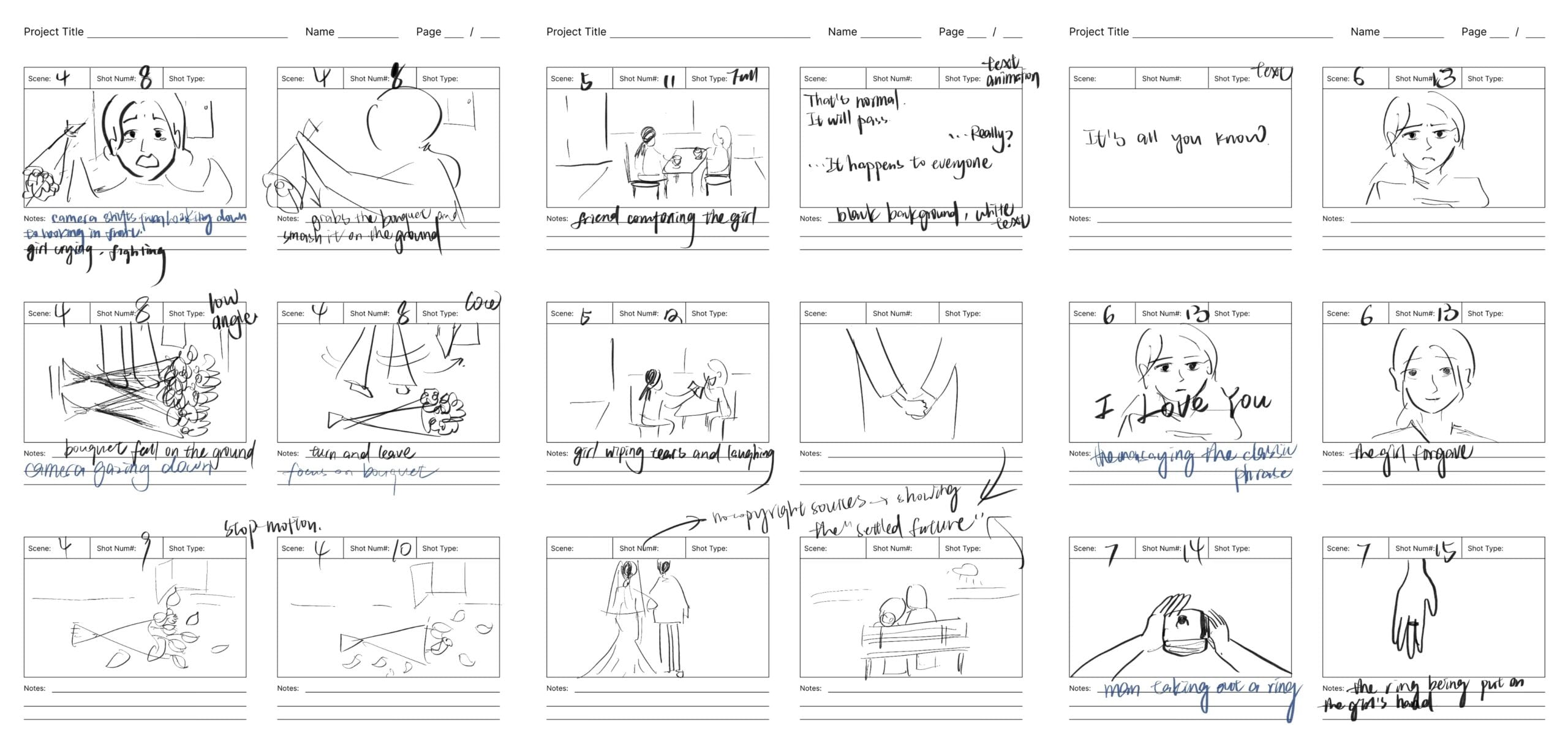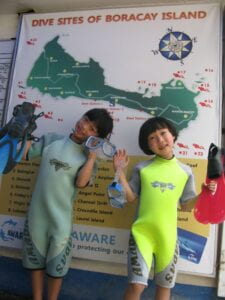1. Concept & Story
- What is the concept & the story in your project?
- How were you inspired to create this project?
- What is the ideation process of this project?
- Why do you want to explore this topic?
Our story is inspired by and based on the poem “Planet of Love” by Richard Siken, revolving around exploring the complex interplay of love, control, and power dynamics within relationships, with a specific emphasis on the theme of feminism. We’ve crafted a narrative that delves into the intersectionality between these elements, shedding light on a recurring scenario where males often assume the role of “the director,” manipulating every facet of the relationship. In this dynamic, females are treated as mere tools to fulfill the desires of their male counterparts, which are like “the actress” subjected to manipulation. Our central storyline revolves around a protagonist – a free-spirited and unique woman. As she meets a man, falls in love, navigates through conflicts without breaking up, gets married with the man, she gradually realizes the extent of her subjugation and how her trueself is dying. In response, she decides to reclaim her agency and resist the controlling dynamics at play. The film’s unique perspective unfolds primarily through the lens of the male character, with occasional glimpses into the female protagonist’s viewpoint. What we both found interesting to achieve is that we won’t film male character on-screen, however the film is always about male dominance and control, highlighting the pervasive impact of such dynamics on relationships and emphasizing the need for equality and independence.
As for the ideation process of this project, we were at the second floor of the coffee shop where we planned to start our filming (but on the actual filming day, the shop was closed so we went to the bar next to the shop), seeing people come in and out from the door, we thought about telling a story about people’s relationships. Katy and me are both interested in feminism and the idea of trying to inspire people with self-independence since it is nowadays a very common phenomenon that we forget the rights we are born to have and we conform to those social norms that tell us to be obedient. As a result, we decided to create the story and visualize the scene based on the poem. Then we had a general discussion about what the story should be like and what should be audiences’ take away, and then we visualized each sentence by trying to see how each sentence of the poem could fit into our storyline. We found out that during the visualization process, it is very important to just say anything that pops up in our minds when we are reading them, seamless team communication has been a key in our film production.
2. Creation Process & Execution
- Share your storyboard and describe how it helped you in your project.
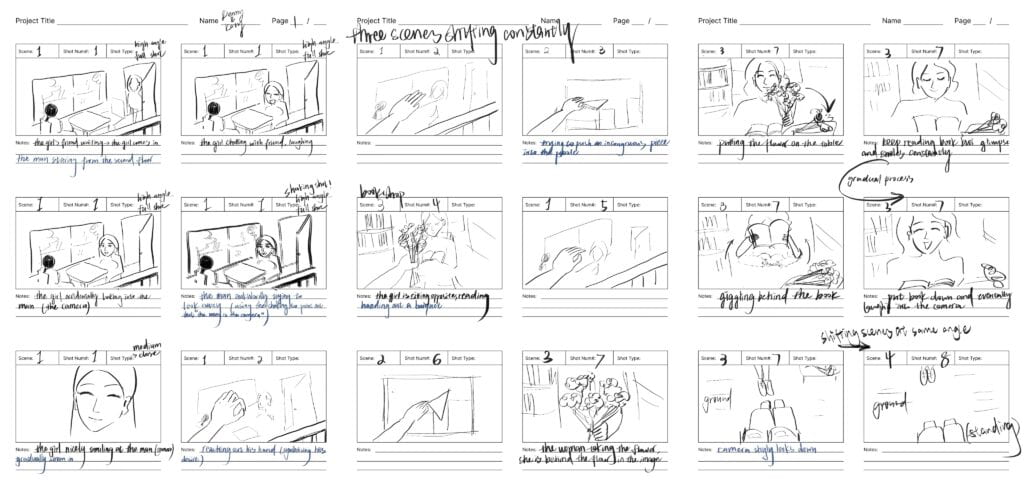
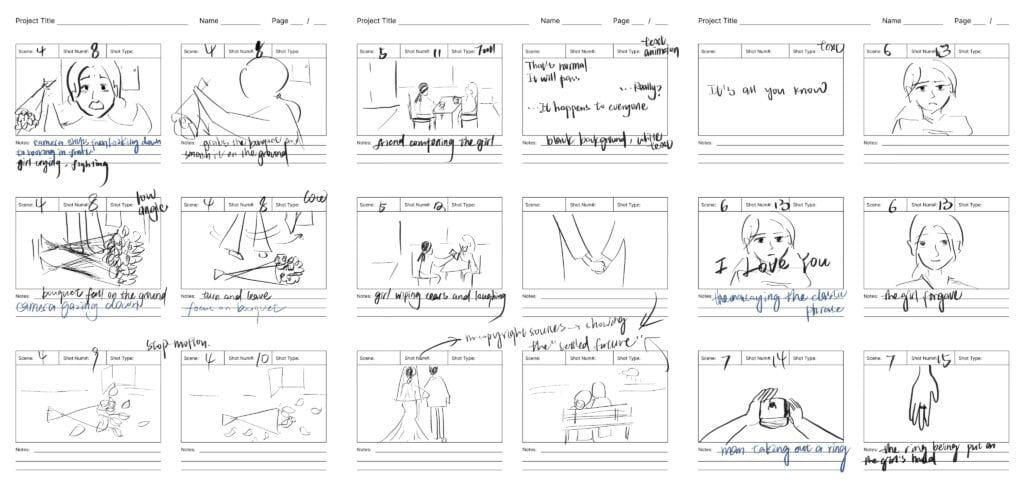
Drawing the storyboard is a process that urges us to make our ideas concrete, including the scenes, the location and all the equipment we need. It also leads us to think about the techniques of utilizing shots and screen design from the examples of classic films we watched in class. The result of the storyboard is, of course, beneficial during our filming. We can be much more efficient and determined when there is a reference at hand even though we need a lot of adjustment during the filming.
- Describe the process of choosing a setting, shooting, sourcing materials, lighting, and directing (if applicable).
The way we decided everything was quite simple. We found a cute cafe in Jingan and many inspirations just came into our head during our talk sitting there. We were reading the poem which was attractive but confusing to both of us, so we tried our best to decompose the poem sentence by sentence or even word by word and explain it with a linear structure. After we settled the main idea and plot, all the details came along in our heads based on our own experience with films and what we learned in class. Fully discussion is also a key point of the integrity and diversity of our results.
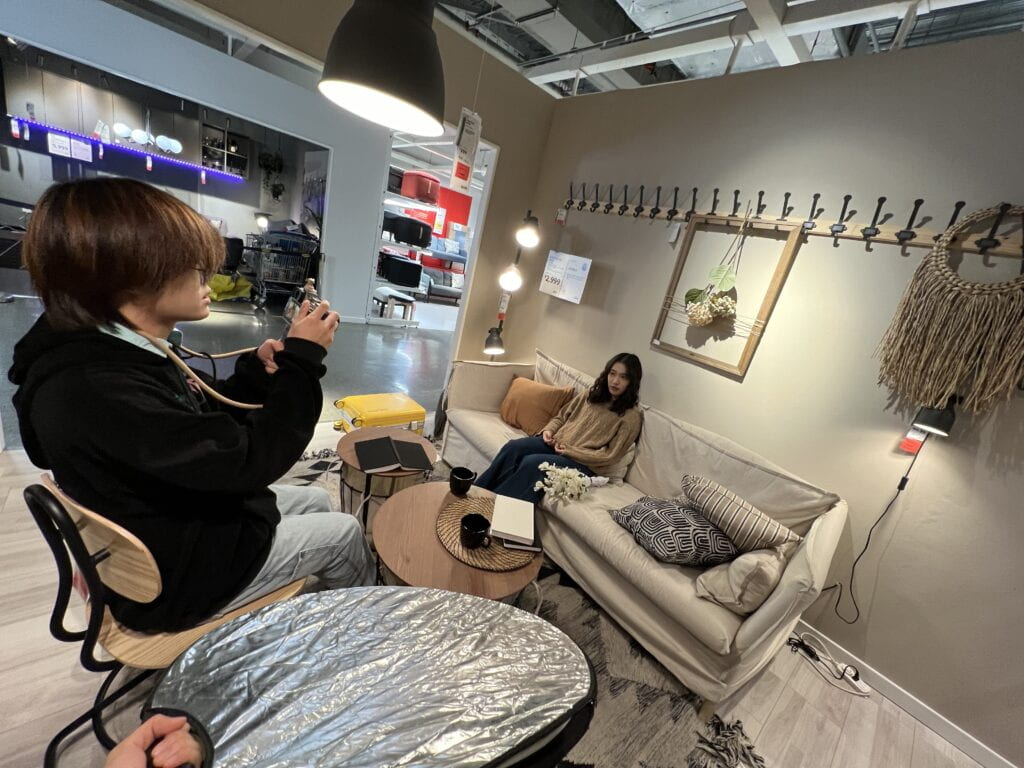
- Describe the challenges you encountered during the content creation process, and how you solved or overcame them.
The biggest challenge we faced was that we found the speed of the camera memory card wasn’t enough to support videos longer than 10 seconds while everything else, including the actress and the makeup, was poised. Hence, we had to replan our shots and editing to film each piece only in 10 seconds but, at the same time, didn’t look fragmented when pieced together. The techniques we used to solve the problem included shifting angles, zooming in and inserting text.
- Describe your editing & post-production process. You may share a few screenshots from Premiere about the editing techniques and effects you learned.
Many problems were exposed during the editing and many details were added at that time accordingly. The lack of coherence and connection was more obvious when the footage was put together. We learned how to make the text show up letter by letter and how to create a page with texts rolling automatically. Besides, we learned how to stack luminous effects on our original images to create a glorious and vague sense.
3.Collaboration
- Describe your own role and contribution to the project.
We did most of the work together and both contributed from the ideas to the result. The part I was in charge of was storyboarding, actress and voice-over.
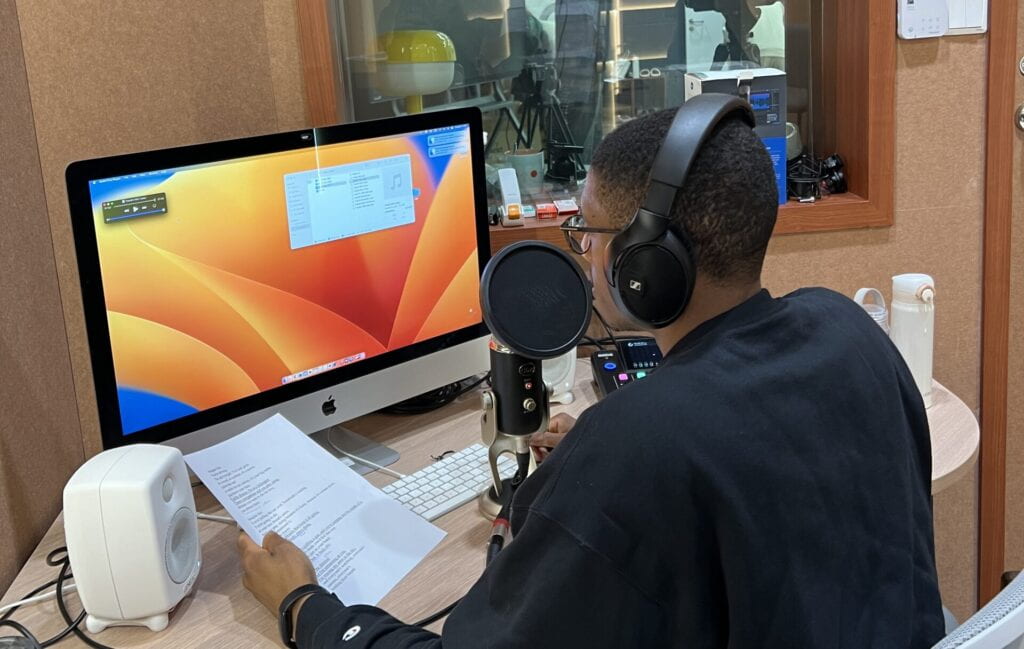
- Express appreciation for the work your teammate did.
Denny is an all-round partner who makes the whole process much easier. He was very creative when brainstorming the scenes and was very thoughtful during the filming.
- Was there something you learned from your partner?
makeup:)
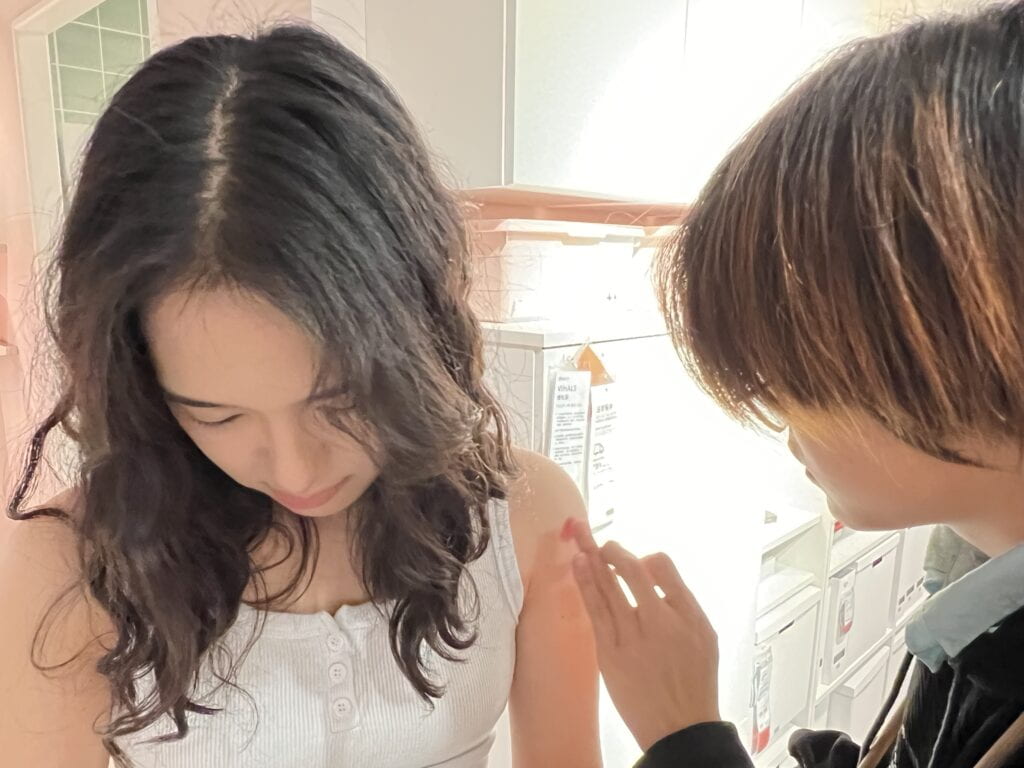
4.Aesthetics & Results
Consider the aesthetics you choose to pursue your concept and story such as the following, tell us why do you think it is effective and you may also share your inspirations and references:
The movie Close is our inspiration. We are deeply touched by the art style of this film, such as the distinctive colors and a lot of close-up scenes the director of this film used to focus on the characters’ emotions and feelings. Particularly notable is the film’s minimal reliance on dialogue; instead, it skillfully conveys nuanced relationships and thoughts through visual storytelling such as lens languages.
5. The Final Result

